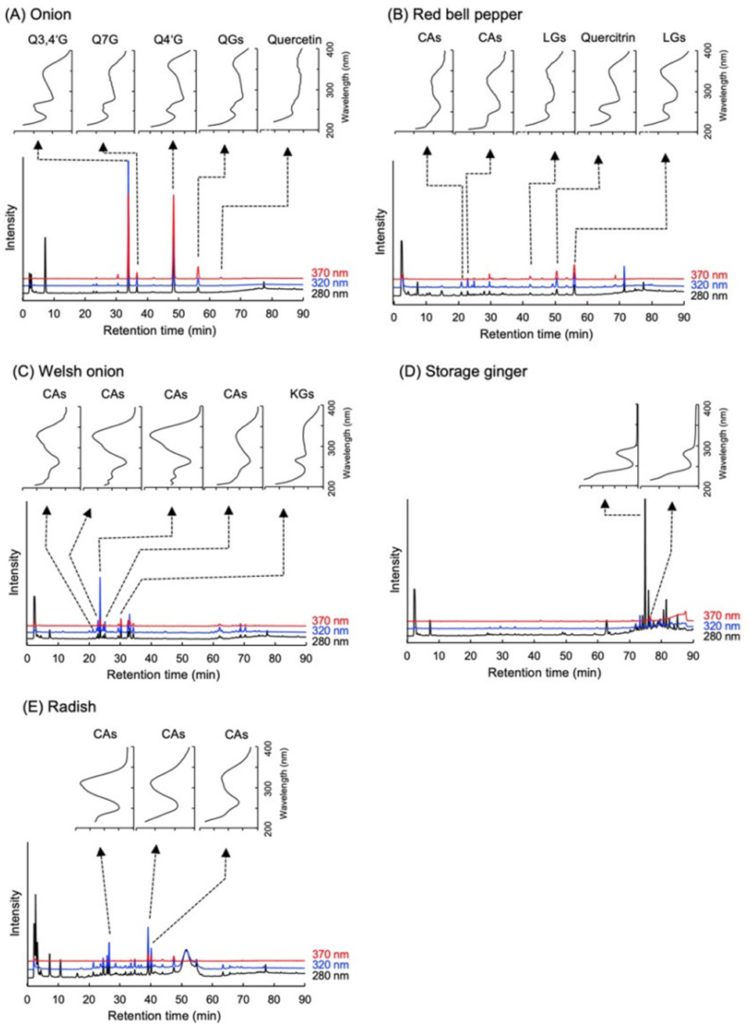The incidence of type I hypersensitivity has been on the rise in recent years, showing a consistent upward trend. The allergies that we are most familiar with, such as hay fever, allergic dermatitis, hives, and bronchial asthma, are classified as Type I allergies.
Hence in this blog, I would like to inform of you the study, “Anti-Allergic Activity of Fucoidan Can Be Enhanced by Coexistence with Quercetin” by Masashi Mizuno, et al.
In a previous study conducted using mice, it was demonstrated that the administration of fucoidan extracted from seaweed (Saccharina japonica) had a suppressive effect on type I hypersensitivity. Interestingly, this effect was observed only when fucoidan was administered orally, and not intraperitoneally. The mechanism behind this suppression was found to be the secretion of galectin-9, which exhibits a strong binding affinity for IgE in the blood. However, the amount of seaweed required to control this type I hypersensitivity is very high (12 g dry weight per person per day). Thus, the primary objective of this research study is to investigate the presence of specific components in various vegetables that can augment the effectiveness of inhibiting type I hypersensitivity reactions.
During the initial phase of the experiment, the polyphenols present in vegetables were compared using the HPLC-DAD system for polyphenol analysis. The onion extract exhibited four major peaks (Figure 1A). Among these peaks, three peaks with retention times of 33.8, 36.7, and 48.3 min were consistent with quercetin-3,4-glucosides, quercetin-7-glucoside, and quercetin-4-glucoside, respectively. The onion powder was then hydrolyzed and analyzed again. Hydrolysis yielded a single peak with a retention time of 63.6 min, which matched the standard quercetin aglycon in retention time and spectrum. Quercetin aglycones are the common components of all four glycosides, as indicated by this information.
In Figure 1A and Figure 1C, it is shown that onions are abundant in quercetin glycosides, while green onions are abundant in kaempferol glycosides. Interestingly, the coexistence of these compounds with fucoidan has demonstrated antiallergic effects. In Figure 1B, it can be observed that the red bell pepper, which exhibited minimal impact, contained luteolin glycosides and small quantities of quercetin glycosides. The cinnamic acid content in preserved ginger and radish was also found to be high, as indicated by Figures 1D, E, however, their effectiveness was comparatively lower. These results suggest that quercetin and kaempferol may be effective candidates to stimulate the antiallergic effects of fucoidan.
The objective was to establish whether the antiallergic activity of fucoidan could be enhanced by quercetin or kaempferol. To achieve this, both compounds were administered orally at the same time, in doses that did not show any antiallergic effects independently. As shown in Figure 3, 100 μg of either fucoidan, quercetin, or kaempferol showed no activity when taken alone. However, co-administration of 100 μg of fucoidan and 100 μg of quercetin or kaempferol significantly inhibited ear edema. In particular, co-administration of quercetin and fucoidan showed a higher suppressive effect than kaempferol. An interesting finding was observed when 100 μg of fucoidan, in conjunction with 50 μg each of quercetin and kaempferol, was orally administered – the level of ear edema suppression closely resembled that of the control.
In order to verify whether the antiallergic activity of fucoidan could be enhanced by quercetin or kaempferol, both compounds were given orally at the same time in doses that did not show antiallergic activity on their own. 100 μg of either fucoidan, quercetin, or kaempferol showed no activity when taken alone. Despite this, the simultaneous intake of 100 μg of fucoidan and 100 μg of quercetin or kaempferol showed a significant reduction in swelling of the ear. Specifically, combining quercetin and fucoidan had a stronger suppressive effect compared to kaempferol. It is worth noting that when fucoidan, quercetin, and kaempferol were orally administered at doses of 100 μg, 50 μg, and 50 μg respectively, they effectively suppressed ear edema to a similar extent as the control group.
In order to explore the impact of Gal9 on the expression of antiallergic effects during the PCA reaction, the researchers opted to inhibit Gal9 activity in the blood by administering anti-Gal9 antibodies via tail vein injection. This experimental approach was implemented in the presence of fucoidan and quercetin. The combination of fucoidan and quercetin taken orally successfully suppressed ear edema, and its resolution required the injection of a neutralizing Gal9 antibody, rather than an isotype IgG antibody. These results suggest that Gal9 is involved in allergy suppression by simultaneous oral administration of fucoidan and quercetin.
In addition, they delved deeper into the investigation of vegetables and fruits that are abundant in quercetin and kaempferol. Broccoli and okra extracts showed antiallergic activity at 60 mg and 70 mg, respectively. However, the amount of each sample was not halved. In the presence of Fucoidan (200 μg), a substantial decrease of nearly 50% in ear edema was observed when compared to the allergenic group exposed to IgE and antigen. Conversely, no significant decrease in ear edema was observed in the group receiving a 100 μg dose. However, when fucoidan (100 μg) was orally administered together with broccoli or okra extract (30 mg and 35 mg, respectively), ear edema was significantly reduced by 69% and 81%, respectively, compared to fucoidan alone. As a result, it is expected that the antiallergic effects of fucoidan will be enhanced through the synergistic action of quercetin and kaempferol, both of which are found in vegetables with high concentrations of these compounds.

Source: Int J Mol Sci. 2022 Oct; 23(20): 12163. doi: 10.3390/ijms232012163

Can you write more about it? Your articles are always helpful to me. Thank you!
I always appreciate your wonderful comment. Your comment gives me courage to work providing good blog.
I have noticed that of all forms of insurance, medical insurance is the most controversial because of the issue between the insurance cover company’s need to remain afloat and the user’s need to have insurance coverage. Insurance companies’ revenue on wellbeing plans have become low, therefore some providers struggle to earn profits. Thanks for the ideas you reveal through this site.
I am so happy it was helpful for you.
It’s my belief that mesothelioma is definitely the most deadly cancer. It has unusual qualities. The more I really look at it the harder I am convinced it does not conduct itself like a real solid cells cancer. When mesothelioma is usually a rogue viral infection, in that case there is the chance of developing a vaccine plus offering vaccination to asbestos exposed people who are vulnerable to high risk regarding developing potential asbestos relevant malignancies. Thanks for discussing your ideas on this important health issue.
I am happy I could help you somehow, and it was a moment when I thought it was a good idea to continue blogging.
Your comment makes me encouraged continue more information.